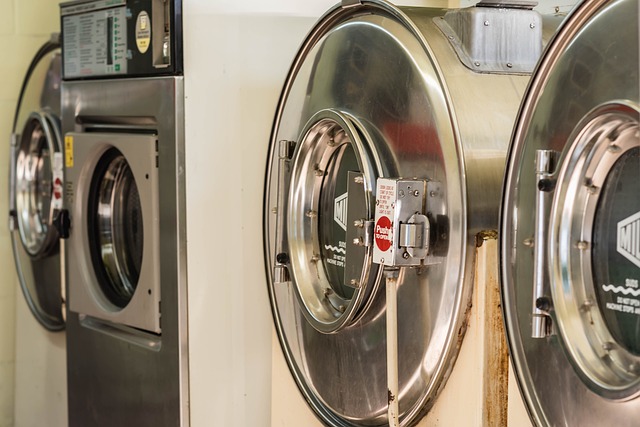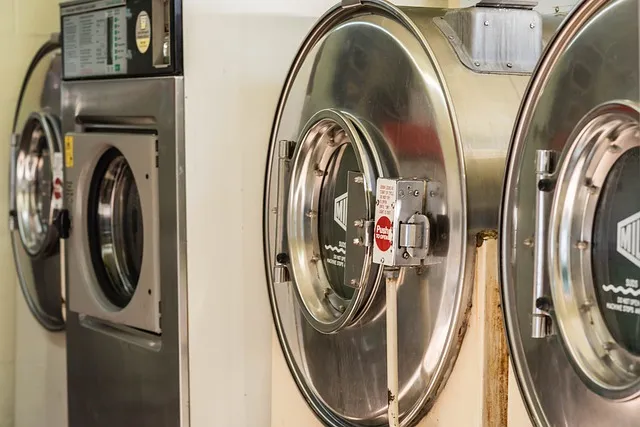How Do You Maintain a Dryer’s Tension Pulley?
First things first, regular inspection is key. Just like checking your car’s oil, you should periodically check the tension pulley. Look for signs of wear and tear, like cracks or excessive play. If you spot any issues, don’t wait to address them. A pulley in poor condition can lead to a cascade of problems, from noisy operation to broken belts.
Lubrication is another crucial step. The tension pulley needs a bit of grease to keep everything running without a hitch. Use a high-quality lubricant specifically designed for dryer parts. Apply it sparingly—too much grease can attract dust and lint, which might clog up the works.
Cleaning is also essential. Dust and lint can accumulate around the pulley and lead to premature wear. A quick clean with a vacuum or brush can make a world of difference. Make sure to disconnect the dryer before you start cleaning to avoid any accidents.
Also, listen to your dryer. If you hear unusual noises, it might be a sign that the tension pulley needs attention. Strange sounds can indicate that the pulley is struggling or that the belt is misaligned.
Taking these simple steps will help ensure your tension pulley stays in good working order, keeping your dryer running efficiently and extending its lifespan.
Essential Tips for Keeping Your Dryer’s Tension Pulley in Top Shape
First off, regular inspection is key. Just like you’d check the oil in your car, make it a habit to look at your dryer’s tension pulley every few months. This means unplugging the dryer, removing the front panel, and checking for any signs of wear or damage. If the pulley looks worn out or cracked, it’s time for a replacement.
Next, keep the pulley and surrounding area clean. Lint and debris can build up around the pulley, affecting its performance and potentially leading to bigger problems down the line. A simple vacuuming of the area can prevent these issues from escalating. Also, don’t forget to clear out the lint trap regularly to reduce buildup around the pulley.
Lubrication is another vital aspect. While many tension pulleys are designed to be low-maintenance, a bit of lubrication can help ensure smooth operation. Use a silicone-based lubricant, as it’s less likely to attract dirt and dust. Just a small amount on the pulley’s bearings can make a big difference in how quietly and efficiently it runs.
Finally, listen to your dryer. Unusual noises or vibrations can be a sign that something’s off with the tension pulley. If you notice a squeaking or grinding sound, it’s time to take a closer look. Ignoring these noises could lead to more significant issues, so addressing them promptly can save you from costly repairs.
By following these simple yet effective tips, you can ensure your dryer’s tension pulley remains in excellent condition, helping your dryer perform at its best.
The Ultimate Guide to Maintaining Your Dryer’s Tension Pulley for Longevity
Maintaining the tension pulley might sound like a daunting task, but it’s easier than you think. Start by regularly checking the pulley for any signs of wear or damage. A squeaky or wobbly pulley is a red flag that it might need attention. It’s akin to keeping an eye on the engine of a car—if something seems off, it’s worth investigating.

Another tip is to keep the area around the pulley clean. Lint and dust can accumulate and cause the pulley to work harder than it should, leading to premature wear. Just as you wouldn’t let debris clog your car’s air filter, don’t let it obstruct your dryer’s components. A quick, occasional clean-up can make a world of difference.
Lubrication is also key. A dry or stiff pulley can strain the belt and reduce the dryer’s efficiency. Think of it like oiling a squeaky door hinge—just a bit of lubricant can ensure smooth operation. However, be cautious not to overdo it; excess lubricant can attract more dust and grime.

Lastly, consider checking the alignment of the pulley. An off-kilter pulley can cause uneven wear on the belt, leading to bigger problems down the road. It’s like having a crooked picture frame; it may not seem like a big deal, but it affects the overall picture.
Taking these steps can significantly extend the life of your dryer’s tension pulley, ensuring your appliance serves you faithfully for years to come.
How to Avoid Common Mistakes When Caring for Your Dryer’s Tension Pulley
First off, don’t skip regular inspections. Think of your tension pulley as a car’s engine. If you ignore the check-ups, you might find yourself stuck with a major breakdown. Look for signs of wear and tear like squeaking noises or a drum that’s not spinning as smoothly as it should. These are red flags that your pulley might need attention.
Next, be cautious with lubrication. Overdoing it can be just as damaging as underdoing it. Imagine trying to run a marathon in slippery shoes—too much lubricant can make the pulley overheat and wear out faster. Use a lubricant that’s specifically designed for dryer parts and apply just a small amount.
Another crucial tip: avoid overloading your dryer. It’s tempting to shove in that extra load of laundry, but a cramped drum can put undue stress on the tension pulley. It’s like trying to carry too many bags at once; the strain will eventually take its toll.
And, always check the alignment of the pulley. An off-center pulley can cause uneven wear, which might lead to premature failure. Think of it like driving a car with misaligned wheels—you wouldn’t want to do that for long!
By keeping an eye on these details, you ensure that your tension pulley runs smoothly and your dryer operates efficiently. After all, a well-maintained pulley means your laundry routine stays hassle-free and your clothes come out just right.
Troubleshooting Dryer Issues: Ensuring Your Tension Pulley Stays Dry and Functional
First off, let’s understand what the tension pulley does. Picture it like a conductor at an orchestra, maintaining the right tension in the dryer belt to keep everything in harmony. If it’s worn out or if the bearing inside it starts to seize up, your dryer belt can become slack or even break. This not only affects the efficiency of your dryer but can also lead to more significant issues down the line.
Here’s the kicker: keeping the tension pulley dry is essential. Moisture is a sneaky enemy in this scenario. If the tension pulley gets wet, it can lead to rust and corrosion, which can severely impact its performance. So, what can you do? Regularly check the area around your tension pulley for any signs of moisture. Ensure your dryer is properly vented and that there are no leaks from your washer or surrounding appliances.
Another tip is to listen for any unusual noises during the drying cycle. If you hear squealing or grinding sounds, it’s a red flag that the tension pulley might be struggling. In such cases, turning off the dryer and inspecting the pulley for any visible damage or buildup can help prevent further issues.
Taking a few moments to maintain and inspect this small part can save you from more significant headaches in the future. So, keep an eye on your tension pulley—it might just be the key to keeping your dryer running like a dream.
Mastering Dryer Maintenance: The Key to a Well-Functioning Tension Pulley
First off, let’s talk about what this little part does. The tension pulley keeps the dryer belt taut. Imagine it as the tightrope walker’s balancing pole, preventing the belt from sagging or slipping. If the tension pulley isn’t working correctly, your dryer’s belt might loosen or even snap, leading to all sorts of issues. That’s why regular maintenance is a game-changer.
Start by giving the tension pulley a visual check every few months. Look for any signs of wear and tear or squeaks that might hint at trouble. A squeaky pulley is like a canary in the coal mine—it’s a signal that it might need some lubrication or even replacement. Keeping the pulley clean is equally important. Dust and lint can build up and create friction, much like how a dirty windshield can obstruct your view. Regular cleaning helps maintain smooth operation and extends the life of your dryer.
Also, don’t forget to inspect the dryer belt itself. If you notice any fraying or cracks, it’s time for a replacement. A compromised belt puts extra strain on the tension pulley, much like trying to drive a car with a worn-out tire.
Mastering these simple maintenance steps ensures your tension pulley—and your entire dryer—runs like a well-oiled machine, giving you peace of mind and clean clothes every time.
Dryer Tension Pulley Care 101: Steps to Prevent Premature Wear and Tear
First off, regular maintenance is key. Just like you wouldn’t skip your car’s oil change, don’t neglect your dryer’s tension pulley. Start by cleaning around the pulley to remove lint and debris that can cause friction and accelerate wear. A simple vacuuming or brushing can do wonders.
Next, listen up! If you hear squealing or thumping noises, it’s a sign that your pulley might need some attention. These sounds are like red flags waving, signaling that the pulley is either misaligned or needs lubrication. In these cases, a little WD-40 can be your best friend. Apply it sparingly to the pulley’s shaft to keep things running smoothly.
Also, don’t overlook the belt. The tension pulley and belt work together like a perfectly matched dance duo. If the belt is worn or loose, it can put extra strain on the pulley, leading to premature wear. Regularly check the belt for signs of fraying or slack, and replace it if necessary.
Finally, keep an eye on the alignment. An improperly aligned pulley can cause uneven wear and tear, affecting not just the pulley itself but also the dryer’s overall performance. If you’re not sure about alignment, consult your dryer’s manual or a professional to avoid making things worse.

